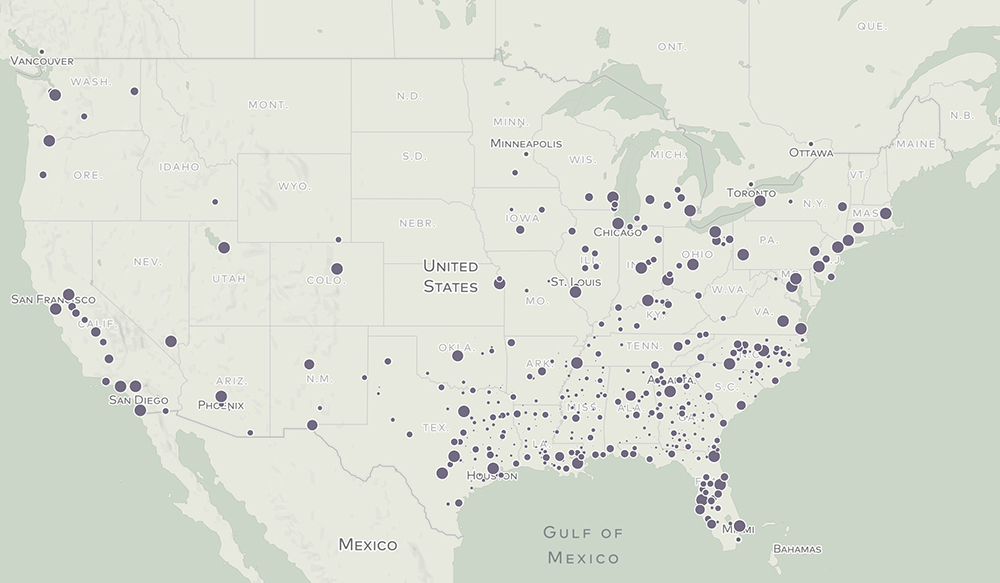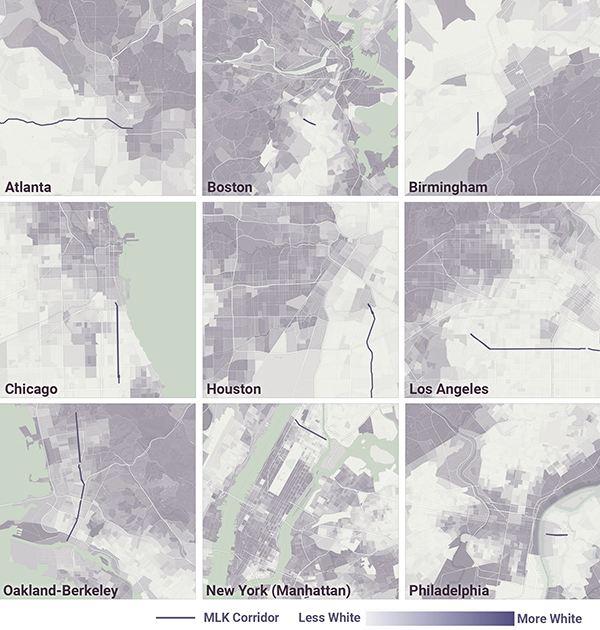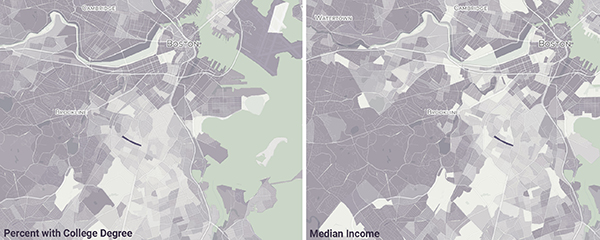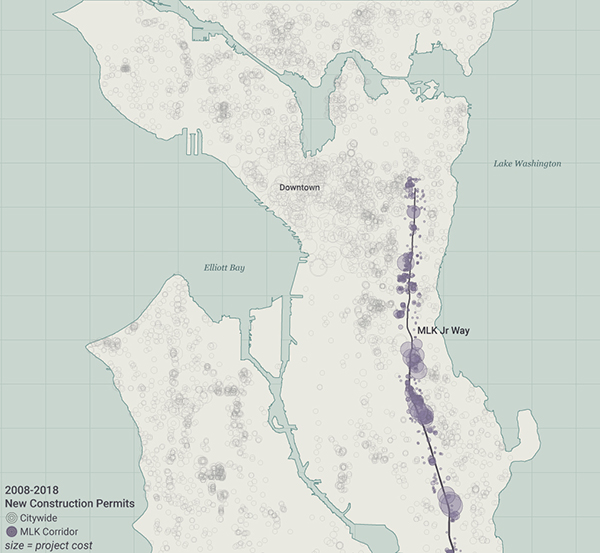MLK Day 2018: Reflections and Next Steps
Recognizing Martin Luther King Day at Sasaki
 Sasaki
Sasaki

The last few years have reminded us that symbols matter. Cities are often the places where these symbols take physical expression – as monuments, architectural style, and as names. The naming of places is a particularly strong symbol: it becomes emblazoned on our maps, can cover large territories of land, and shapes our cultural vocabulary. Just by referring to a named place, we give subtle endorsement to the cultural meaning it carries.
One of the most named features of cities are our streets. In the months and years after Martin Luther King Jr’s death, there was a concerted movement to rename streets in his honor. Led both by grassroots initiative and civil rights organizations such as the Southern Christian Leadership Conference (SCLC), streets across the country began to take on his name throughout the 1970’s.

Installing a new street sign for MLK Drive in St Louis, MO 1972
Image source: From the collections of the St. Louis Mercantile Library at the University of Missouri-St.Louis
Streets, like all physical infrastructure, exist in specific locations within a city. These locations themselves speak to the values and perspectives of a city when a symbolic name or memorial is established there. Put another way, where we name can be just as significant as what we name.
So what can we learn by looking at the streets where Dr. King’s name was attached? Across the range of issues central to his message, how do these communities compare to the rest of their city?
To understand this, we created “Where’s MLK”, an exploratory visualization of MLK Corridors throughout the US. We looked at data on how the areas around these MLK Corridors compare to the larger metropolitan region. The data was organized across themes of race, income and education, and urban development. We chose these issues not only because they are often the ones that define the character of a place in urban America, but because they reflect the breadth and scope that characterized Dr. King’s work.
Overwhelmingly, MLK Corridors are in places that are minority majority. Although regionally diverse, many of the MLK Corridors in large metropolitan areas concentrate in traditionally black neighborhoods like Chicago’s South Side, Uptown and the Bronx in New York, as well as larger swaths like Southwest Atlanta.

However, this trend holds true even in regions without a traditionally large black population, such as Denver CO.

Income and education also follow clear trends that parallel the dynamics of race and ethnicity: MLK Corridors tend to have lower incomes and educational attainment levels.

Along with lower income levels, median home values in MLK Corridors also tend to be lower than average. Given the importance of housing as a source of financial equity in America, this makes it harder for these neighborhoods to build intergenerational wealth, perpetuating the gap between these neighborhoods and the region as a whole. In many cases the streets that were dedicated to MLK were also flanked by lower value land uses, such as cemeteries, industrial parks, and public housing.
However, this isn’t always the case: in some cities MLK Corridors represent a much wider range of conditions. In Austin, Martin Luther King Jr Ave forms the boundary between University of Texas and Downtown Austin. It includes the university, an emerging medical complex, a major cemetery, a golf course as well as a swath of residential development which is gentrifying from a historically black neighborhood.

Seattle is perhaps the most intriguing example. Over the last 20 years, MLK Way has become a major development corridor, with the city’s first light rail line and the development that comes with it. Because of this, the character of MLK, which traditionally ran through the largest minority neighborhoods in the city, is changing.
Today, many of these MLK Corridors are ground zero for larger shifts in the economic and demographic geography of American cities. Many accounts have lamented the conditions of these streets relative to Dr. King’s legacy. It’s hard not to agree with the logic in that. In some ways though, maybe this is exactly what MLK would have wanted for his namesake streets – that rather than rest on our accomplishments, they call attention as he did to the work still to be done to realize the “beloved community.” Explore all the data for yourself, here.